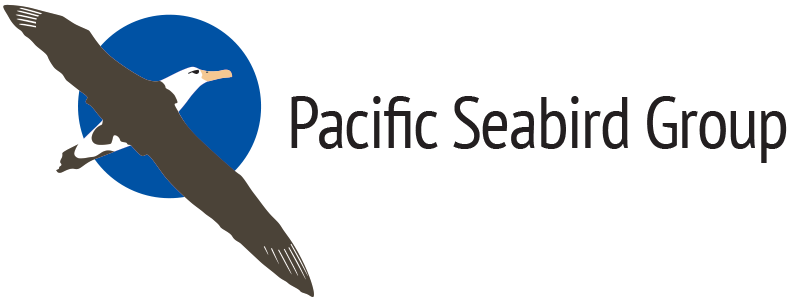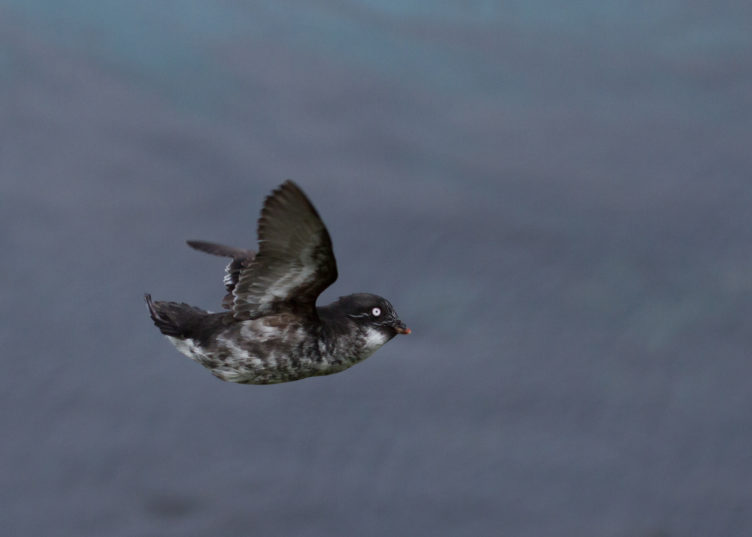Alva et al. (2024)
Author Information
Dayana Alva, Carlos Zavalaga, Sebastián Lozano-Sanllehi, Cinthia Irigoin-Lovera, and Diego Gonzáles-DelCarpio: Universidad Científica del Sur, Perú
House mice abundance index and its relation to breeding success of Peruvian diving-petrels on Isla La Vieja, Perú
In January 2023, I (Alva) was honored to be selected as a recipient of the Craig Harrison Conservation Fund, administered by the Pacific Seabird Group. As an undergraduate student in marine biology at Universidad Científica del Sur in Lima, Peru, and member of the Unidad de Investigación de Ecosistemas Marinos – Grupo Aves Marinas (a seabird lab led by Dr. Carlos Zavalaga), I received this grant to conduct fieldwork essential for my Bachelor’s honors thesis, focusing on the impact of introduced house mice on the breeding success of a major Peruvian Diving-petrel (Pelecanoides garnotii) colony. Between May 2023 and February 2024, I undertook three field trips to Isla La Vieja, situated within the Paracas National Reserve in southern Peru. Having previously engaged in rigorous fieldwork on this desert island since 2022, encompassing activities such as walking distances of 15–20 km daily, surveying diving-petrel burrows using camera probes, and deploying hundreds of mouse traps, I sought to advance my research agenda. Specifically, I aimed to designate five sectors across the island (approximately 1,000 ha) to identify active diving-petrel nests within distinct clusters and deploy mouse traps in the surrounding areas.
My hypothesis postulated that an increased presence of mice would correspond to diminished breeding success, given the potential predatory threat these rodents pose to seabirds. However, during my initial visit in May 2023, an unexpected occurrence of coastal El Niño led to warmer temperatures in normally cold, productive waters, resulting in a scarcity of food for the diving-petrels. Consequently, all marked nests, as well as numerous others surveyed, were abandoned. This event was accompanied by the distressing discovery of hundreds of diving-petrel carcasses stranded nearby bay beaches.
Upon the normalization of conditions in November 2023, I returned to Isla La Vieja to mark 100 active diving-petrel nests across five sectors. In January 2024, I revisited the island to check the marked nests and implement a new round of mouse trapping. Through these efforts, I obtained valuable data for my research.
Initial findings revealed the widespread distribution of house mice (Mus musculus) across the island’s surface. Over two 15-day trapping sessions, we captured a total of 91 mice, corresponding to 9,000 trap-nights over the entire study period. Despite variations in breeding success observed across sectors (ranging from 0.38 to 0.72), no significant correlation was found between breeding success and an index of mouse abundance (C100TN). However, it’s imperative to note that these results are preliminary, given the limited pairwise data evaluated (n = 5). Future data collection efforts are essential to augment the sample size and provide more robust conclusions.
Nevertheless, these preliminary findings raise important questions regarding the role of mice as predators of diving-petrel eggs, chicks, and adults, versus their potential role as scavengers of abandoned eggs, chicks, or carcasses previously preyed upon by Kelp Gulls (Larus dominicanus), a confirmed predator of diving-petrels.
Thanks to the generous support provided by the Pacific Seabird Group, I have successfully completed the initial phase of this research endeavor, enabling me to graduate with honors and prepare a brief report of these findings for submission to a peer-reviewed journal.






